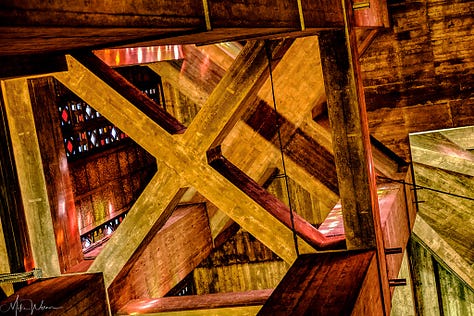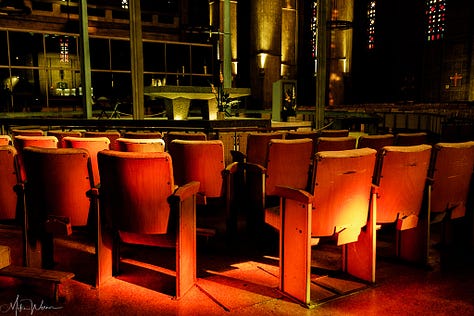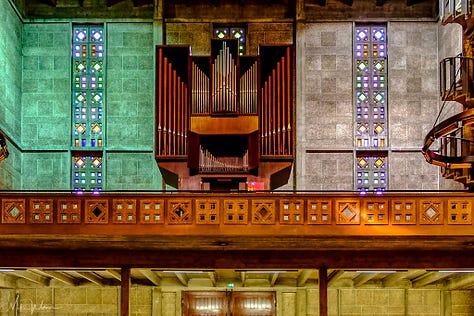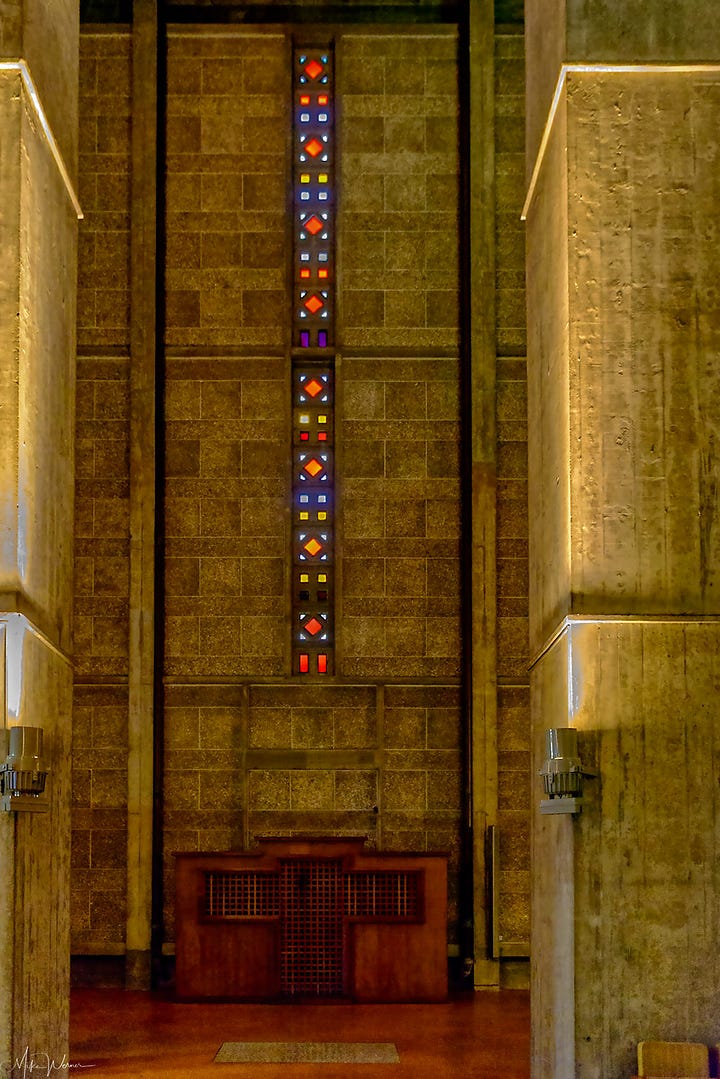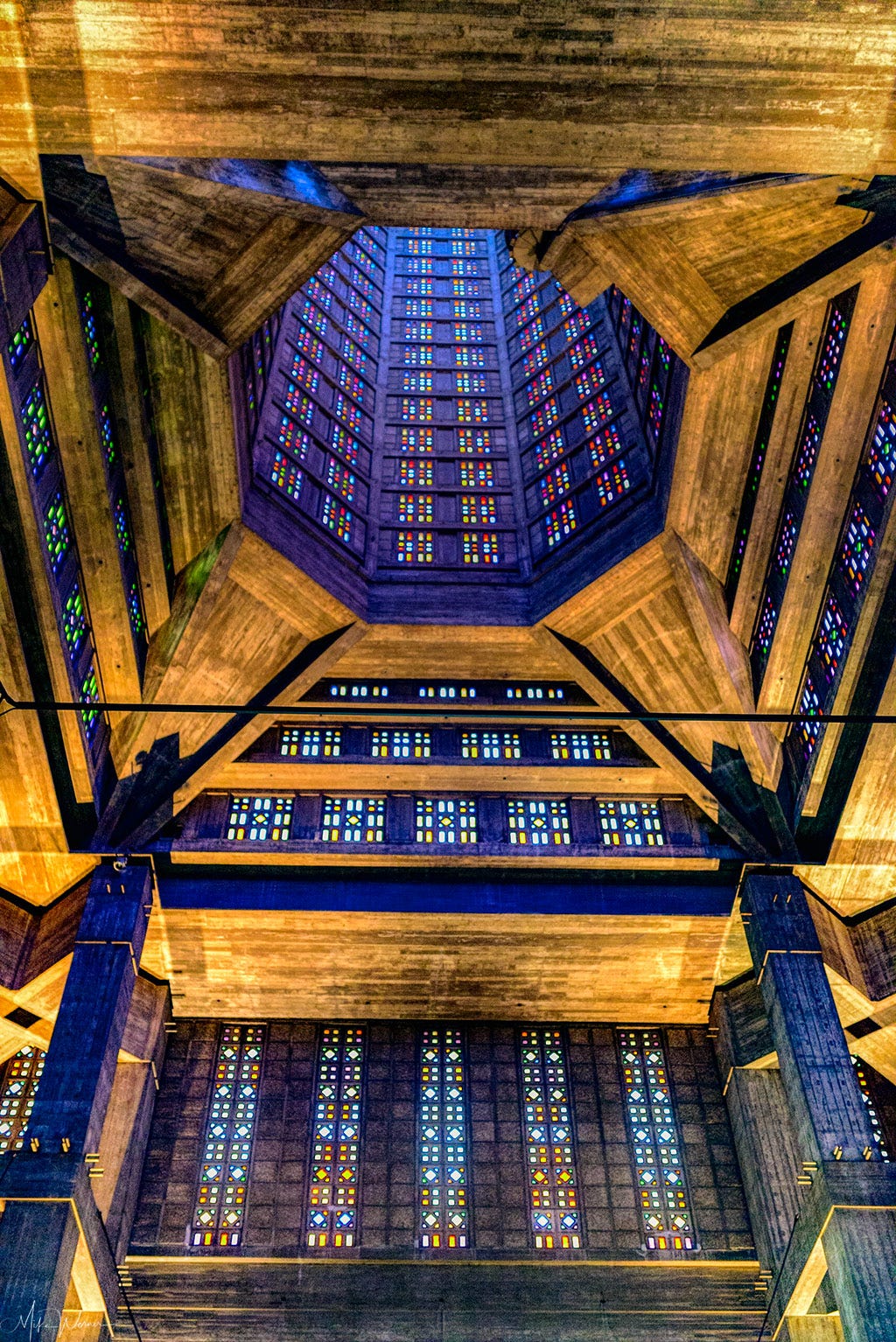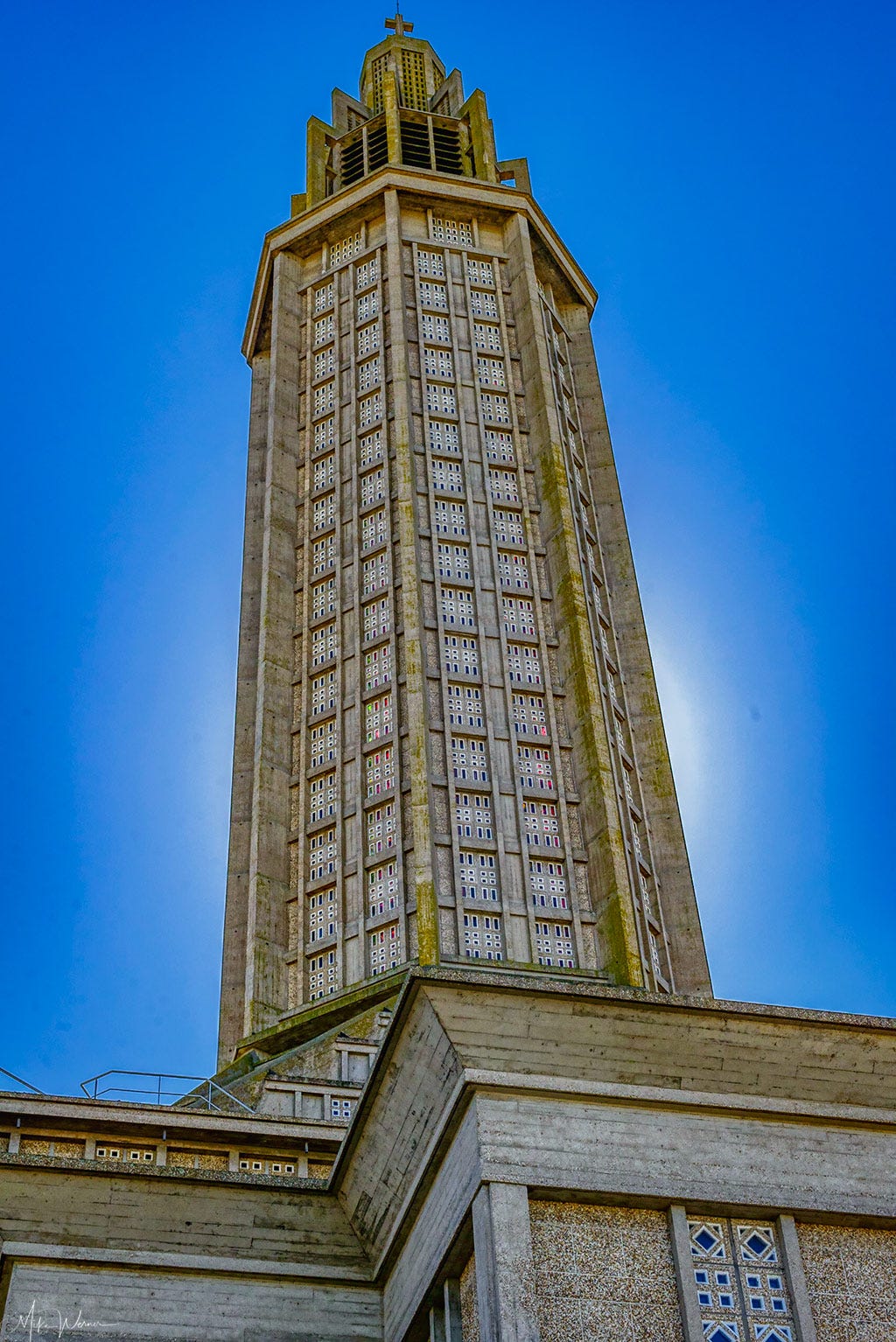St. Joseph's Church in Le Havre, France, is one of the most significant examples of mid-20th century architecture and is an emblematic symbol of the city. It was designed by Auguste Perret, a renowned architect recognized for his pioneering work in the use of reinforced concrete. The church's design was inspired by the Gothic cathedrals of France, but it is also a product of modern architectural innovation.
Click here to see where the Saint-Joseph church is located on Google Maps
Here’s a video of the church seen from up high….
Note: It was widely acknowledged that Auguste Perret, the chief architect responsible for reconstructing Le Havre post-WWII, was not a believer in God. Regardless of his atheism, the Catholic Church commissioned him to conceive and construct a church. As such, when you step inside the church, you encounter a sense of Zen spirituality. This spiritual ambiance is not primarily attributed to traditional Catholic symbols, as there's only a single cross, but rather to the transformative lighting and serene atmosphere within the church.
Here are some key details about the church:
Design and Construction: The design for the church was completed in 1951, and the construction process took place between 1951 and 1957. The structure showcases Perret's innovative use of concrete, and it serves as a masterful demonstration of the architect's capabilities.
Symbolism: The church is dedicated to the memory of the victims of the bombings that destroyed Le Havre during World War II. The tower, which is the most prominent feature of the church, is designed to symbolize a beacon or lighthouse, guiding the souls of the departed towards heaven.
Tower: The church's tower is 107 meters high (about 351 feet), and is lit from the inside, making it a significant visual landmark. The tower is a hollow concrete structure, its exterior punctuated by a grid of small stained glass windows.
Stained Glass Windows: The church's stained glass was designed by the artist Marguerite Huré. The colors of the windows transition from darker shades at the bottom to lighter at the top, symbolizing the progression from earthly life to the divine.

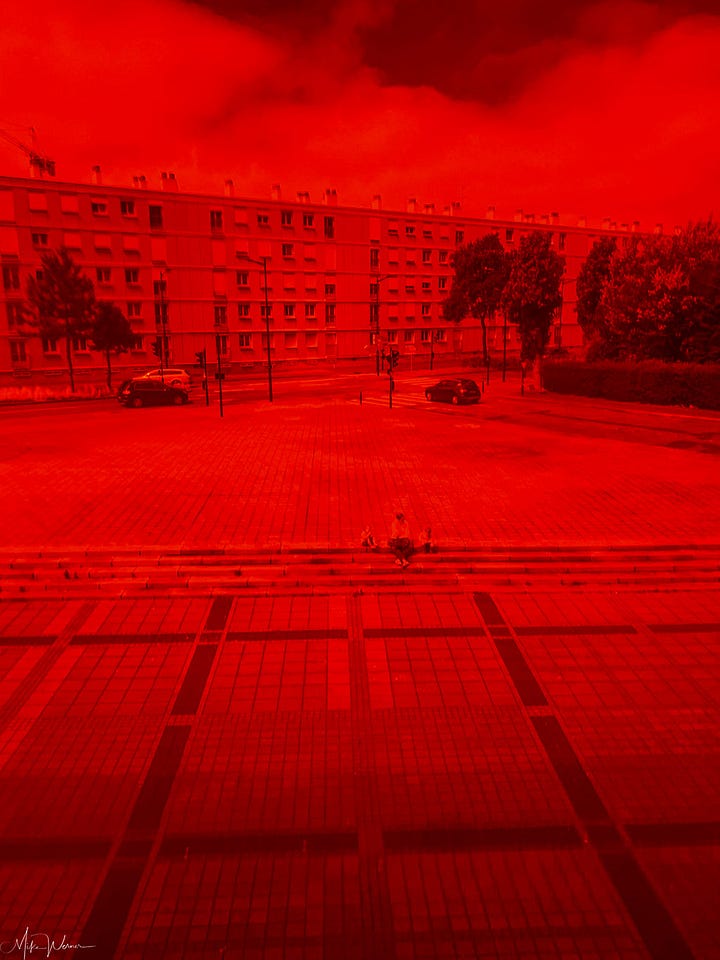
Glass windows and view through one (red) stained glass Interior: The interior of the church is notable for its unique design. It's comprised of a four-sided layout surrounding the central altar, with the roof structured in such a way that it gives the impression of a celestial canopy.
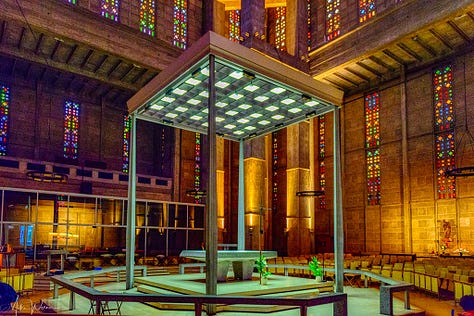
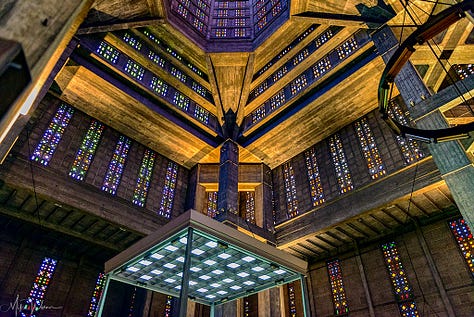
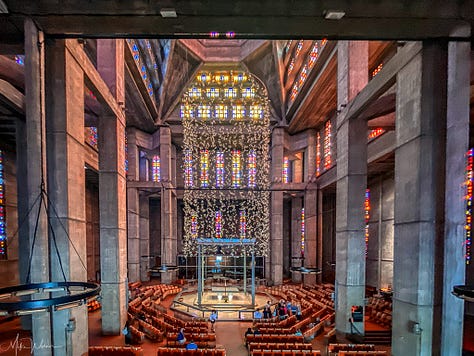
Recognition: St. Joseph's Church is recognized as a key work of Auguste Perret, who is regarded as one of the pioneers of modern architecture. In 2005, the church, along with a number of other buildings in Le Havre designed by Perret, was declared a UNESCO World Heritage Site.
It's worth noting that despite being a fairly modern structure in the context of European churches, St. Joseph's Church has achieved a significant status for its innovative design and the powerful symbolism it carries.
